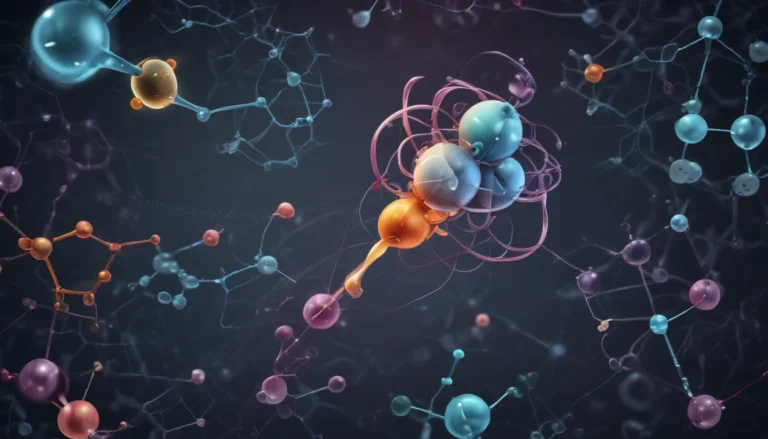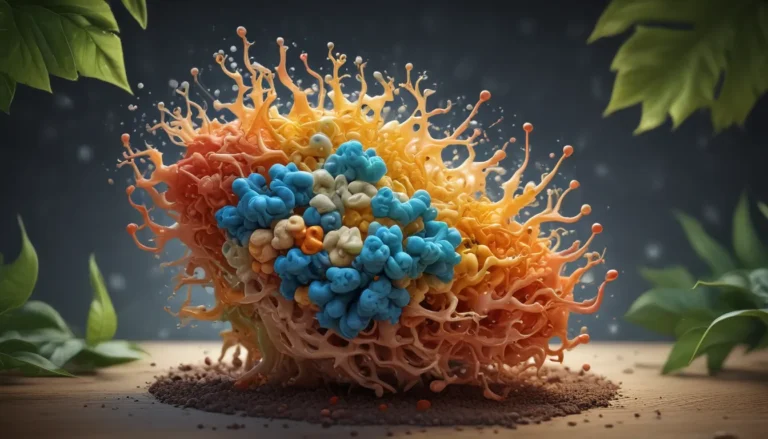A Note About Images: The images used in our articles are for illustration purposes only and may not exactly match the content. They are meant to engage readers, but the text should be relied upon for accurate information.
Chemical equations serve as the foundational building blocks of chemistry, offering us a symbolic representation of the intricate reactions that occur between different substances. While they may initially appear complex, chemical equations hold a wealth of captivating information that unravels the mysteries of the chemical world. In this article, we will delve into thirteen extraordinary facts about chemical equations, shedding light on their historical significance and their pivotal role in everyday life. Join us on this enlightening journey as we explore the fascinating realm of chemical equations!
Deciphering the Essence of Chemical Equations
- Chemical Equations as Recipes for Reactions: Just like a recipe guides us in the kitchen, chemical equations outline the substances that enter a reaction and the products that emerge. Balancing these equations ensures the conservation of mass.
- Unveiling the Secret Code of Chemical Transformations: Chemical equations act as a hidden code that enables scientists to predict, communicate, and calculate critical aspects of reactions, such as product formation, reaction yields, and heat flow.
Unraveling the Core Concepts of Chemical Equations
The Symbolic Language of Chemical Reactions
A chemical equation is a symbolic representation of a chemical reaction, using formulas and symbols to depict the reactants and products involved in the process.
Balancing Act: Maintaining Equilibrium in Chemical Equations
The fundamental principle of balancing a chemical equation ensures that the number of atoms of each element remains consistent on both sides of the equation, in adherence to the law of conservation of mass.
The Rules Governing Chemical Equations
Chemical equations abide by specific rules, including accurate symbols for elements and compounds, indication of the state of matter, and incorporation of coefficients to achieve equilibrium.
Versatile Formats of Chemical Equations
Chemical equations can be articulated in two primary formats: word equations and symbolic equations. While word equations offer a descriptive approach, symbolic equations employ chemical formulas and symbols, commonly used in scientific contexts.
Predicting the Path: Anticipating Reaction Outcomes
By scrutinizing the chemical equation of a reaction, chemists can forecast the reaction type, product formation, and quantity of substances involved, crucial for comprehending and controlling chemical processes.
The Role of Stoichiometry in Balancing Equations
Stoichiometry, a branch of chemistry focusing on quantitative calculations in reactions, aids in balancing chemical equations by adjusting reactant and product coefficients.
Embracing Diversity: Physical and Chemical Changes in Equations
Chemical equations extend beyond representing chemical reactions to encompass physical changes, including phase transitions and dissolution of substances, unified by the principles of balancing and symbolism.
A Universal Language for Communication
Chemical equations serve as a global medium for chemists to communicate and document reactions systematically, providing a concise and standardized representation of complex chemical processes.
Calculating Reaction Yields Through Equations
Utilizing stoichiometry and balanced chemical equations, chemists can ascertain the theoretical yield of a reaction, essential for evaluating reaction efficiency and designing industrial processes.
Upholding the Law of Conservation: Atoms in Equations
The law of conservation of atoms dictates that atoms cannot be created or annihilated in a chemical reaction, emphasizing the importance of maintaining a balance in the total number of each atom in a chemical equation.
Unveiling Reaction Enthalpy: Calculating Heat Flow
By leveraging the balanced chemical equation and associated enthalpy changes, chemists can compute the overall enthalpy change, offering critical insights into the heat flow within chemical processes.
Precision in Stoichiometric Calculations
Stoichiometry calculations enable the determination of reactant and product quantities in a reaction, empowering chemists to optimize reaction conditions and assess efficiency with precision.
Visualizing Equations: The Power of Graphical Representation
Beyond symbolic depiction, chemical equations can be graphically illustrated through diagrams and flowcharts, providing a coherent and visual way to comprehend and interpret chemical reactions.
A Glimpse into the Marvels of Chemical Equations
In essence, chemical equations serve as remarkable tools that unravel the intricate interactions between substances, pivotal in enhancing our comprehension of chemical reactions. Whether delving into industrial processes, environmental studies, pharmaceutical development, or everyday applications, understanding chemical equations is indispensable. The thirteen extraordinary facts elucidate the complexity and allure of these representations, from stoichiometry to equilibrium, casting light on the foundational principles underpinning chemical reactions.
Embark on a journey through the realm of chemical equations, expanding your perception of matter transformations and interactions. Whether you possess a fervent passion for chemistry or a curiosity about the world surrounding you, exploring the domain of chemical equations promises to ignite your inquisitiveness and deepen your admiration for the marvels of chemistry.
FAQs: Navigating Through Common Queries
-
Q: What is a chemical equation?
A: A symbolic representation of a chemical reaction comprising reactants and products. -
Q: Why are chemical equations important?
A: They allow for understanding and predicting complex chemical transformations systematically. -
Q: How do you balance a chemical equation?
A: By adjusting coefficients to ensure the same number and type of atoms on both sides of the equation. -
Q: What is stoichiometry?
A: The branch of chemistry dealing with quantitative relationships in chemical reactions. -
Q: Can chemical equations be written for non-chemical reactions?
A: Yes, they can encompass various non-chemical reactions like nuclear reactions and biological processes.
Delving Deeper into Chemical Equations
As you unravel the enigmatic world of chemical equations, the journey continues with intriguing topics like Hess’s Law and the Bronsted-Lowry Theory, offering profound insights into energy conservation and acid-base chemistry. Take a dive into these captivating realms to enhance your understanding of the chemical universe.
Conclusion: A Journey into the Intriguing Realm of Chemical Equations
In conclusion, chemical equations epitomize the essence of chemistry, encapsulating the essence of intricate reactions and transformations. As we navigate through the realms of industrial applications, environmental significance, and scientific advancements, the profound impact of chemical equations becomes evident. Embrace the wonders of chemistry, embark on an exploration of chemical equations, and witness the harmonious dance of matter and energy unfolding before your eyes.
Chemical equations are not mere symbols but gateways to a world brimming with possibilities and discoveries. Embrace the beauty of chemistry, unravel the mysteries of reactions, and embark on a transformative journey through the captivating realm of chemical equations.
As you embark on your journey through the realms of chemistry, remember that each fact shared is a testament to our commitment to authentic and engaging content. Explore, learn, and discover alongside us, as we delve into the depths of knowledge and unravel the mysteries of the universe. Trust in our dedication to quality and reliability, guiding you through the intricate and fascinating world of science.






